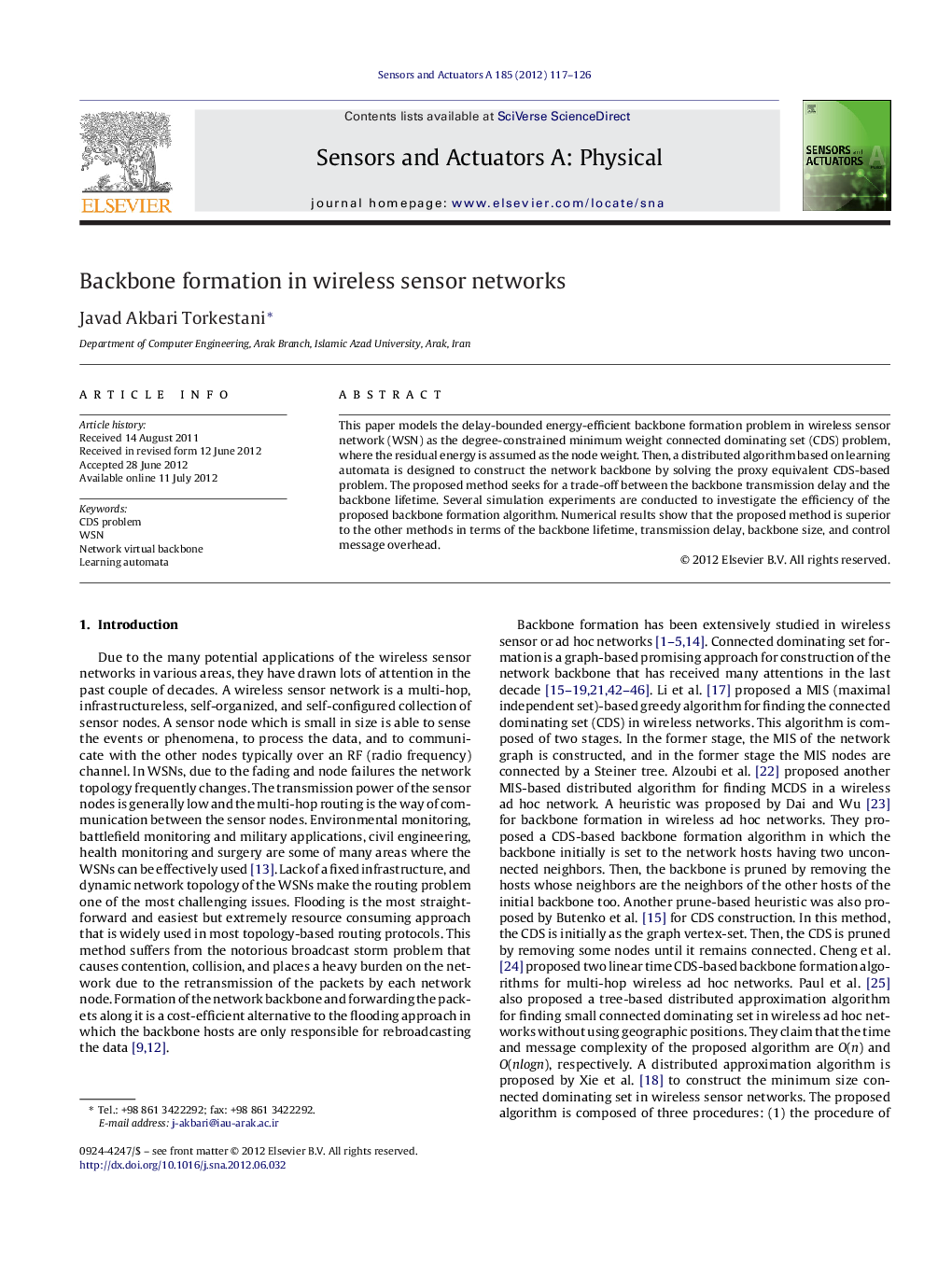| Article ID | Journal | Published Year | Pages | File Type |
|---|---|---|---|---|
| 736346 | Sensors and Actuators A: Physical | 2012 | 10 Pages |
This paper models the delay-bounded energy-efficient backbone formation problem in wireless sensor network (WSN) as the degree-constrained minimum weight connected dominating set (CDS) problem, where the residual energy is assumed as the node weight. Then, a distributed algorithm based on learning automata is designed to construct the network backbone by solving the proxy equivalent CDS-based problem. The proposed method seeks for a trade-off between the backbone transmission delay and the backbone lifetime. Several simulation experiments are conducted to investigate the efficiency of the proposed backbone formation algorithm. Numerical results show that the proposed method is superior to the other methods in terms of the backbone lifetime, transmission delay, backbone size, and control message overhead.
► Introducing the degree-constrained minimum weight connected dominating set problem. ► Modeling the delay-bounded energy-efficient backbone formation problem in WSN. ► Constructing the network backbone by solving the proxy equivalent CDS-based problem. ► Designing a learning automata-based distributed algorithm to form the backbone in WSN. ► Extensive simulation experiments to show the performance of the proposed algorithm.
